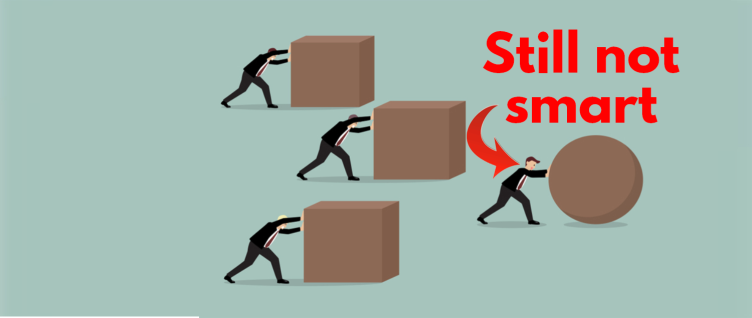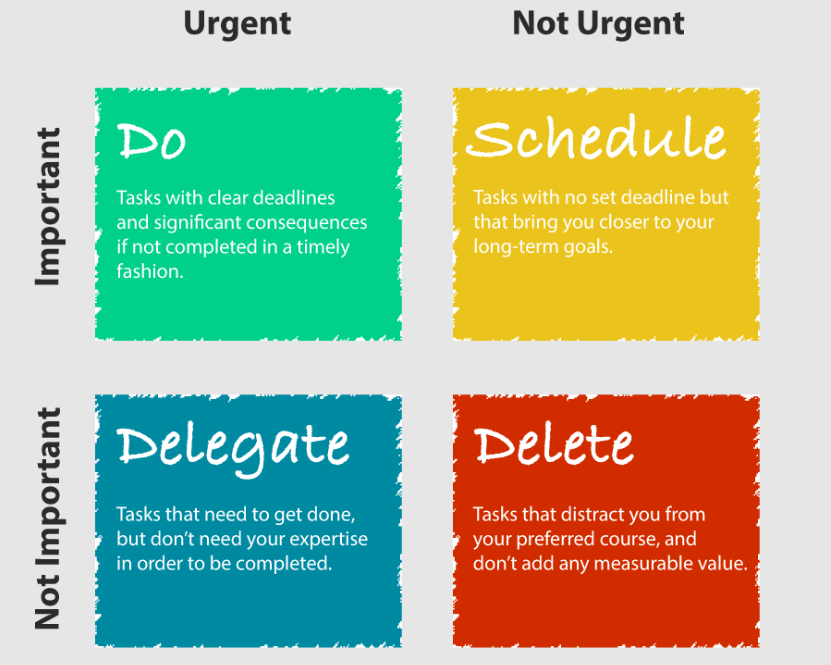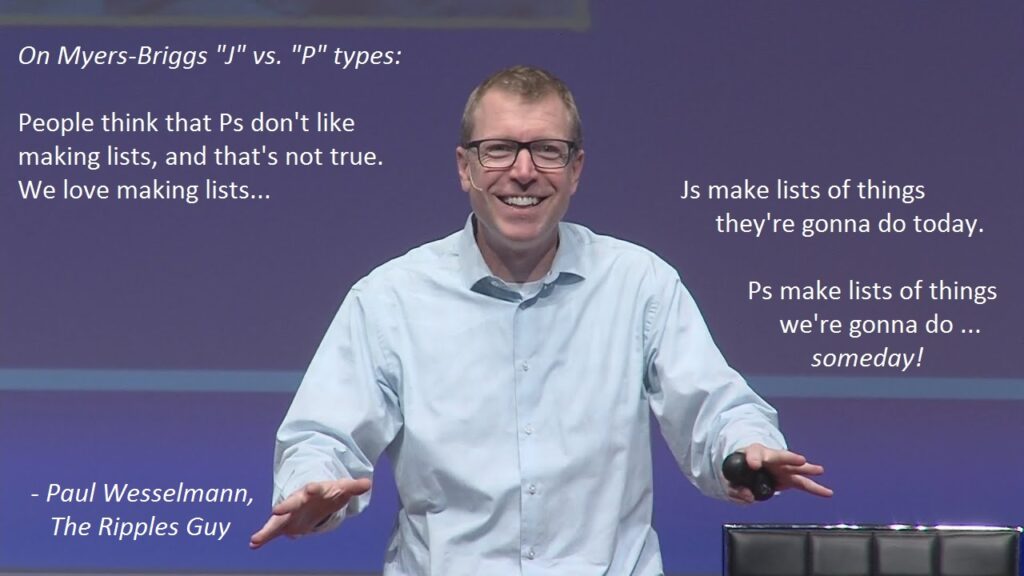Part 2 – Priorities and Obligations
During my formative years, I was interested in most everything I encountered and had the great privilege of being able to pile enrichment activities and lessons on top of each other, learning empirically that I could always do more as long as I was willing to put in the time and energy, not realizing yet that time and energy were actually finite things. Once I was finally forced to make choices between things I wanted to do (I actually got as far as my senior year of high school before this issue became significant or painful), I railed against the idea that I couldn’t just do everything I wanted. And while I intellectually understand this concept, I still have not fully incorporated it into my being – using Robert A Heinlein’s term, I do not grok it. [1] … nor, I would guess, do most of us.
Work Smarter, Not Harder
Speaking broadly about American culture, many of us are imbued with some combination of Protestant work ethic, rugged individualism, and the American dream mentality. It is so easy to believe that if you want something enough, you’ll work to make it happen – and if it doesn’t happen, it’s because you just didn’t work hard enough. (That gives us the opportunity to open a whole ‘nother can of worms and discuss privilege and social structure, but let’s save that very important topic for another time since it deserves much more attention than it would get in this post.) The problem here, to borrow from business parlance, is often not an issue of working harder, but working smarter.

Image credit: [2]
I know plenty of people who are capable, intelligent, passionate, and have the resources to be far more productive and effective than they currently are (myself included). As we identified in last week’s post, the trick to optimizing productivity is not doing more things more efficiently, but rather identifying one’s core priorities and focusing our attention on those. While that makes intuitive sense, it is far more difficult in practice, and one of the primary ways that approach breaks down is in actually being able to identify our own priorities – especially in a world where we are constantly told by others what our priorities should be. We are so frequently bombarded with external priorities, standards, and values – by friends, family, coworkers, salesmen, and society writ large – that we rarely stop to ask ourselves if we actually want what we think we want.
Bridging the gulf between theory and practice here is incredibly difficult, and I would venture to say it’s even worse for those of us who are jack-of-all-trades generalists who become intrigued by nearly every new shiny object that crosses our path, collecting hobbies like some people collect coins. But I have written on this blog before about how packing more and more passion projects into a limited schedule resulted in diminishing returns, to the point that I stopped enjoying – and even started burning out on – things that I’ve loved. Even with the knowledge that true productivity comes from identifying priorities and shedding the rest, I still find myself falling back into old habits of letting my to-do list balloon to mammoth proportions, believing I can get it all done if I just try.
Checking In
Fundamentally, setting priorities, defending boundaries, and sticking to our choices are all a matter of habit, and it takes consistency to build a habit. Coincidentally – or not – one of Brené Brown’s podcast guests not long after Charles Duhigg, whose episode was mentioned in last week’s post, [3] was James Clear, author of Atomic Habits: An Easy & Proven Way to Build Good Habits & Break Bad Ones. [4] I like to think Brené was working through a lot of the same challenges as I am whenever I see parallels in subject matter on her podcast and my blog. One topic they revisited a lot on James Clear’s two-parter was consistency vs. intensity, and that’s when I knew I was in trouble.

Image credit: [5]
I have never considered consistency to be one of my strong suits. I often joke about how much I love making plans, goals, and to-do lists, but that the fun is in making them, not implementing them. Interestingly, the thing I have been incredibly consistent with for over six months now is taking time every single morning and night to use my Panda Planner [6] to check in with myself. I am rarely that consistent with any kind of behavior for that long, even when there are obvious benefits (e.g. taking my vitamins, doing my physical therapy stretches, getting any kind of exercise…). Maybe I like how the Panda Planner is a justifiable form of structured procrastination, but if it were as simple as that, I feel like I never would have quit using it in the first place.
In my New Year’s blog post this year, I described how I had tried to use the Panda Planner in 2019 and failed because I was using it to try to complete my ever-growing to-do list – to be more efficient with an unwieldy list of obligations – rather than using it as a tool to help focus my attention on the essentials. [7] As my expectations of what I “should” be able to accomplish became more and more unrealistic, my to-do list continued to grow, and I was able to complete less and less of it over time. Consequently, I felt continuously worse about myself. At that time, I considered everything to be essential, so there was no prioritization – just a need to complete everything. Additionally, many of those priorities were based on others’ needs, not my own. I recognize that there will always be demands on my time that are based on what others need… far more than can be addressed in the time available. I’m not saying to ignore others’ needs, but I am saying that since I picked up the Panda Planner again, now using it more to identify and defend time for my own priorities, I’ve felt much more satisfied at the end of every day.
Time to Reassess
But there’s another aspect to identifying priorities, one that I certainly hadn’t considered before. In Brené’s conversation with Charles Duhigg, he was very clear that what we define as being productive one day may not necessarily be relevant later. He explained that circumstances change, and priorities can change with them. He wasn’t advocating that we ignore obligations and commitments, but rather recognize our tendency to react without questioning. To quote from the podcast, “there is not an answer for everyone; there is a process for everyone. And that process is questioning yourself again and again and again. … real productivity is actually about slowing down a half-measure, so that you can ask yourself whether you’re doing the right thing or whether you’re just following some choice you came up with on Monday, on a Thursday, without bothering to question whether Monday’s choices were right.”

Image source: [8], Quote source: Drew University workshop, c. 2004
And that, once again, feels like Marie Kondo, whose name and process Catherine Price has invoked in her books, as have I on this blog whenever I’ve recognized that her method can be applied to a given situation. Visualizing your ideal state and then letting go of things that don’t support that vision works on your stuff, [9] on your social calendar, [10] and on distractions in a world where our attention is monetized. [11] That much I understood, but it hadn’t occurred to me that, while a certain end goal may be more fixed, the means of achieving it might shift based on the circumstances.
Given all of that, it’s logical to check in periodically to make sure, not only that we’re still on track with our plans but, more critically, that our plans still make sense. At my job, our team has met for regular check-ins about our multi-year strategic plan to confirm that the priorities we set at the beginning are still relevant in light of how the organization has evolved since then. But why wouldn’t we do the same for ourselves? That question is a bit rhetorical: to quote James Clear, “you do not rise to the level of your goals; you fall to the level of your systems.” We may aspire to do better, but the trick to making it happen is building a system that supports checking in on our priorities to make sure they’re still our priorities. And with that, we’ll wrap up this series next week with what implementation of that concept has looked like for me.
~
Have you had success or difficulty with different planners or planning apps? I’d love to hear what has or hasn’t worked for you in the comments.
Thanks for reading!
[1] https://en.wikipedia.org/wiki/Grok
[2] https://www.linkedin.com/pulse/work-smarter-harder-poor-advice-derek-hsiang/
[3] https://brenebrown.com/podcast/brene-with-charles-duhigg-on-habits-and-productivity/
[4] https://www.goodreads.com/en/book/show/40121378
[5] https://slab.com/blog/eisenhower-matrix/
[7] https://radicalmoderate.online/to-what-end/
[8] https://theripplesguy.com/speaking/
[9] https://radicalmoderate.online/tidying-up-week-1/
[10] https://radicalmoderate.online/414-days-of-solitude/
[11] https://radicalmoderate.online/digital-detox-week-6/
0 Comments